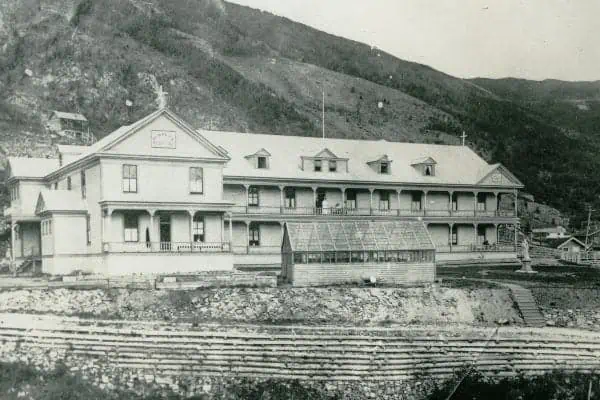“I’m a fifty-pager,” says Whitehorse writer Pat Ellis, commenting on her preference for producing short history booklets.
Her latest, Financial Sourdough Starter Stories—“The Trump Family, from Whitehorse to White House,” the “Klondike Gold Rush” and “Harry Truman and the A-Bomb”—tops out at 64 pages, but the concept remains the same.
“I’ve done a squatter book [Squatters of Downtown Whitehorse], which is only sold at the MacBride Museum, and I did one on the Canol [Road] project. They’ve been reprinted quite a few times.”
The second book, The Canol Adventures: The Greatest Construction Job Since the Panama Canal, is sold at the Yukon Transportation Museum.
“For twenty-five years I’ve been doing research, and I’ve been writing articles, mostly for the Whitehorse Star. I enjoy research, but fiction I can’t seem to hack.”
Her latest small book was intended to spur official interest in a couple of historic events that she feels need some recognition.
By this time, there have been a number of newspaper and magazine accounts, as well as a biography, giving the details of the origins of the Trump family fortune. Fred Trump, who founded the American dynasty, got his start during the Klondike Gold Rush.
He never got to Dawson but, like a lot of entrepreneurs, made a fortune mining the miners. With his partner, Ernest Levin, he established the Arctic Restaurant at Bennett Lake, and later moved it to White Horse (as it was spelled at the time), when the stampeders moved along on their way to the goldfields.
Ellis deals with the Trump story on pages 32 to 37 of this book.
She would like to see a plaque set up to mark the location (the current Horwoods Mall) in Whitehorse where the building once was. She figures we might as well exploit the story for the tourist trade.
The other site she’d like to see remembered is the location of the former Canol Refinery.
She deals with the Canol Project, which involved both the search for oil and the discovery of pitchblende ore (refined to make Uranium-235, the key ingredient in the first atomic bombs) on pages 58 to 64 of the book.
There are other topics that are touched on briefly in these pages: the Gold Rush itself; the saga of Soapy Smith; the White Pass & Yukon Route Railway project; missionary work in Bennett; early commerce in Whitehorse; Robert Service’s description of the 1905 fire; the Taylor & Drury store; Buzz-Saw Jimmy; the strange tale of Fred Trumpf (not Trump); the Alaska Highway project; several other stampeders who made their fortunes and prospered later in life; and a brief biography of Joe Boyle.
There are lots of archival photographs in the book, and Ellis’ confusion over the use of those from the British Columbia Archives are the reason that she’s giving the book away rather than selling it.
After she’d gone to print, she learned they wanted more for the use of the photos than her grant funding could have covered. They said it was okay as long as she didn’t sell them. She printed 400 copies of the book and had 80 left at the time of this interview. You can contact her if you would like a copy.




